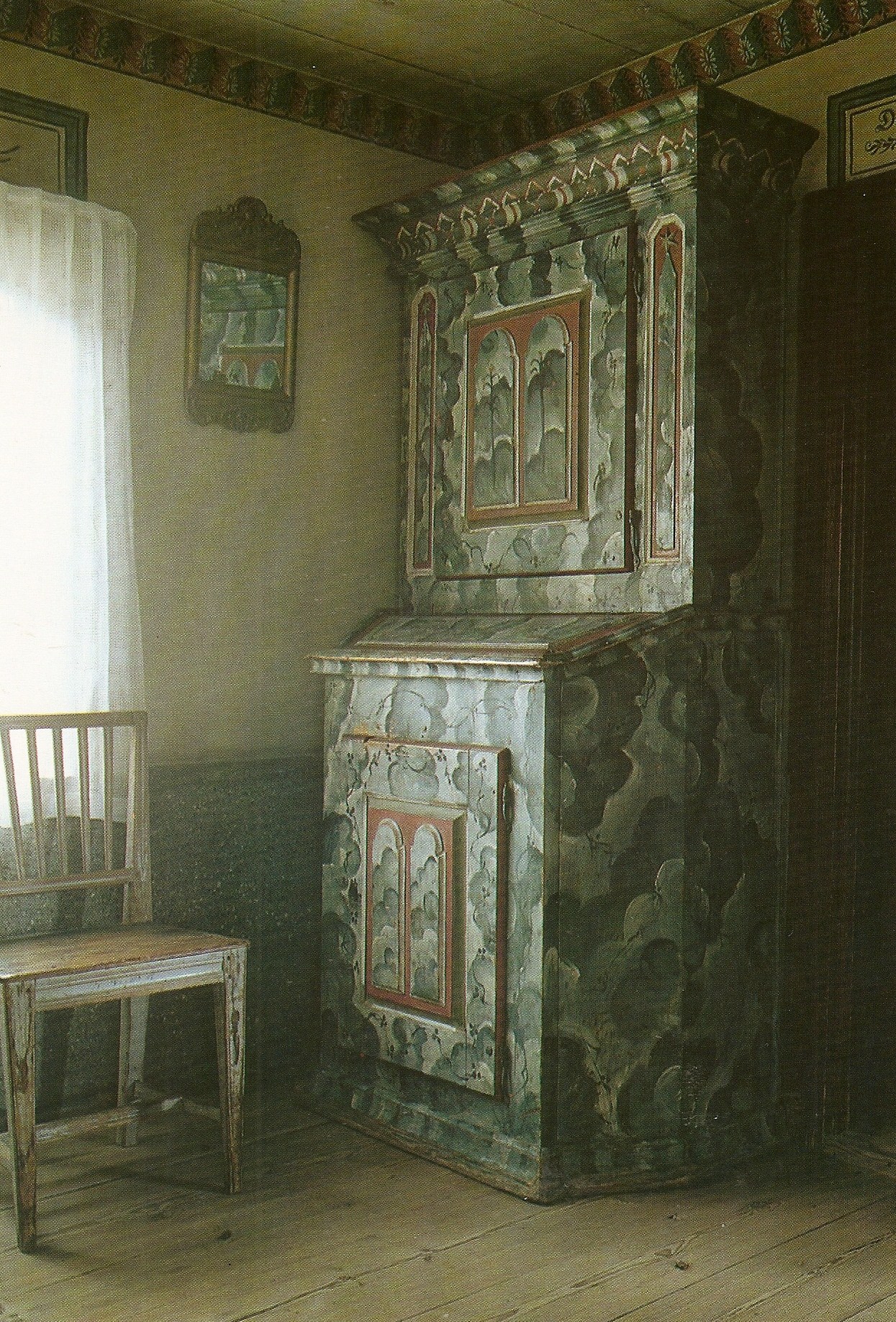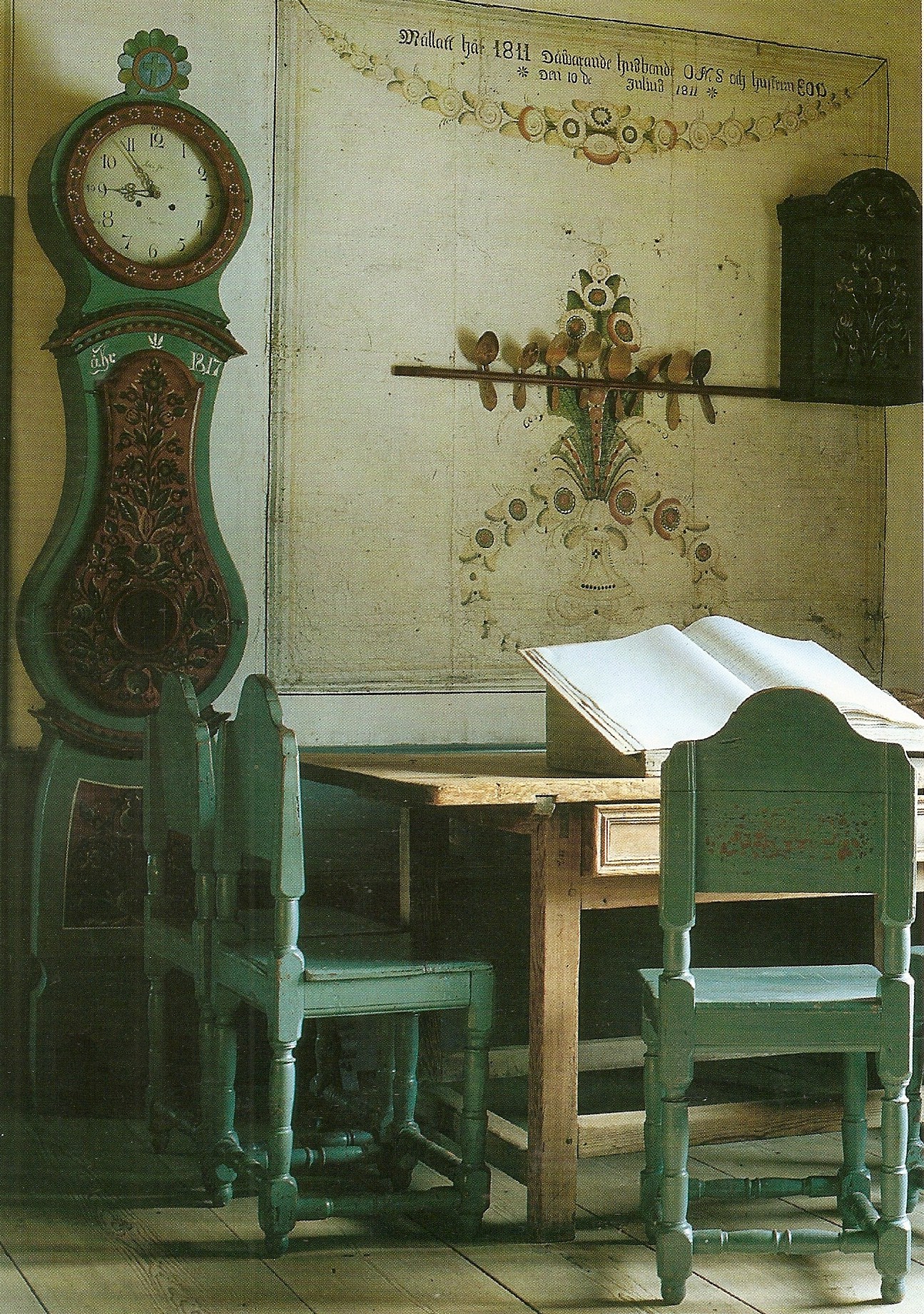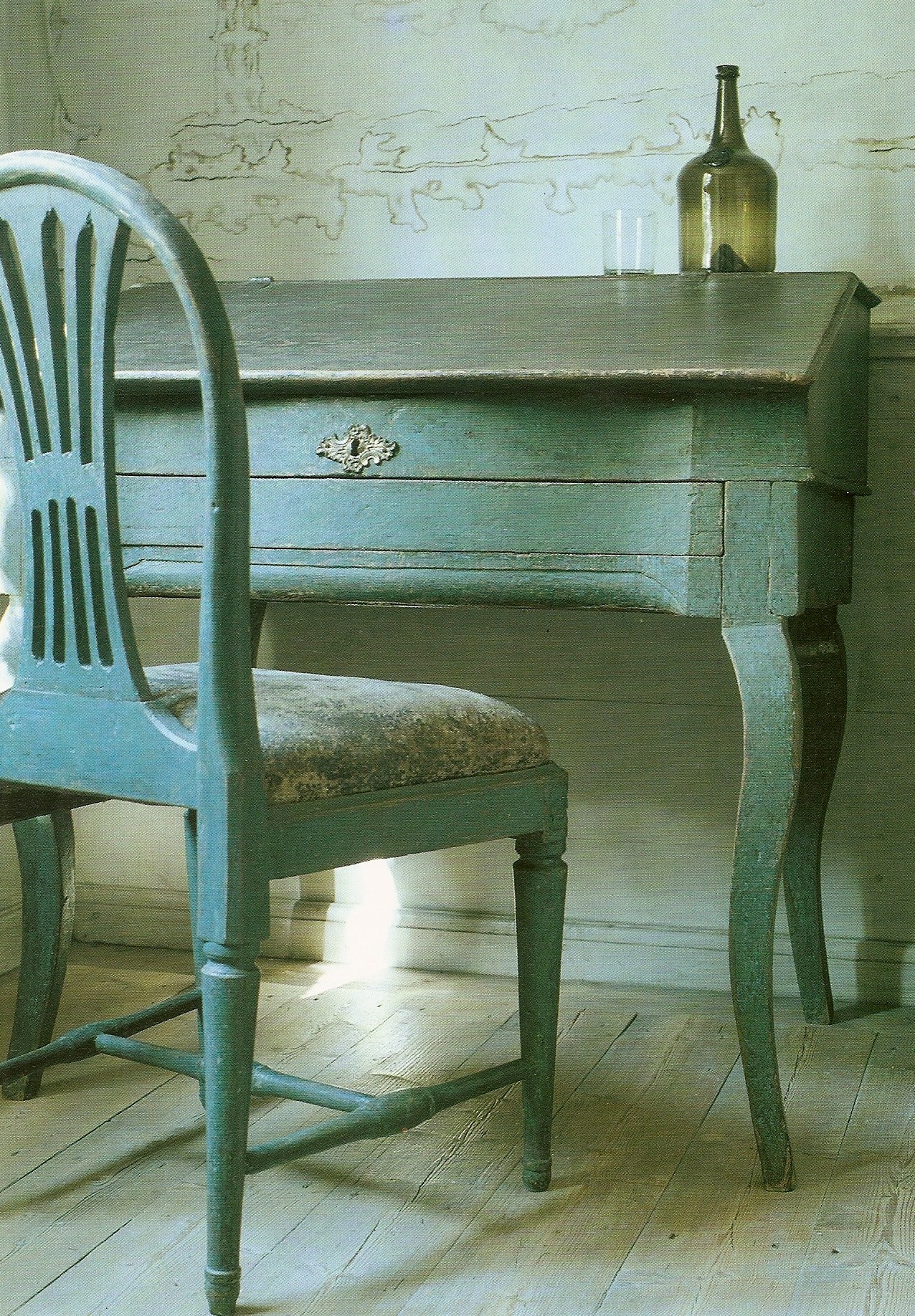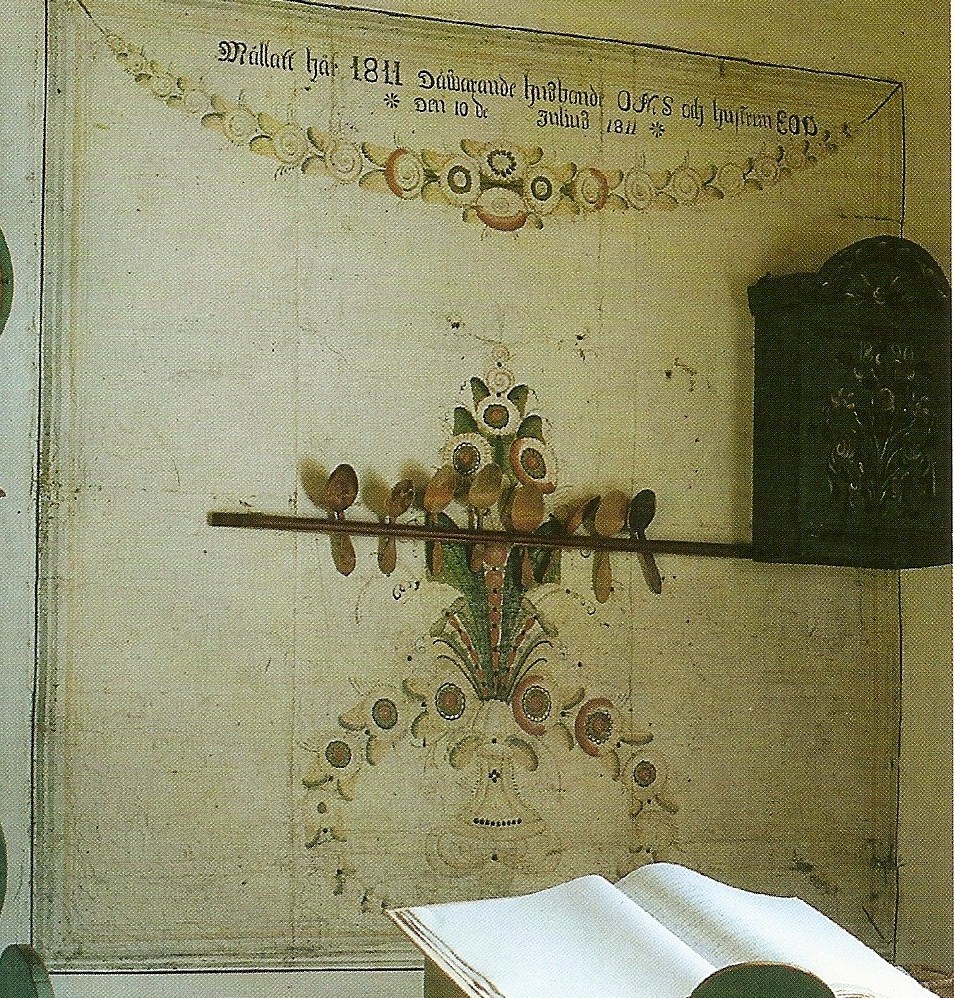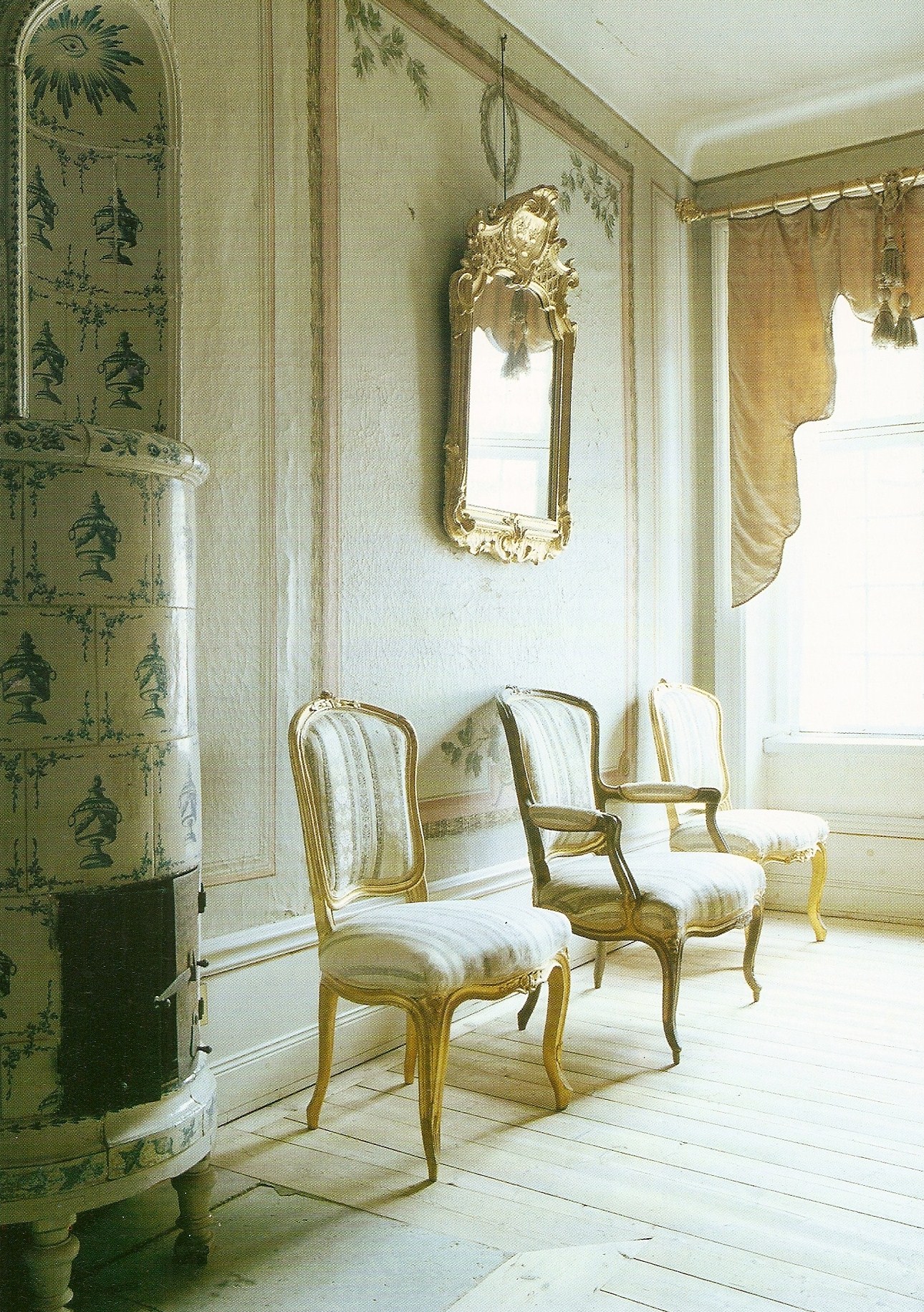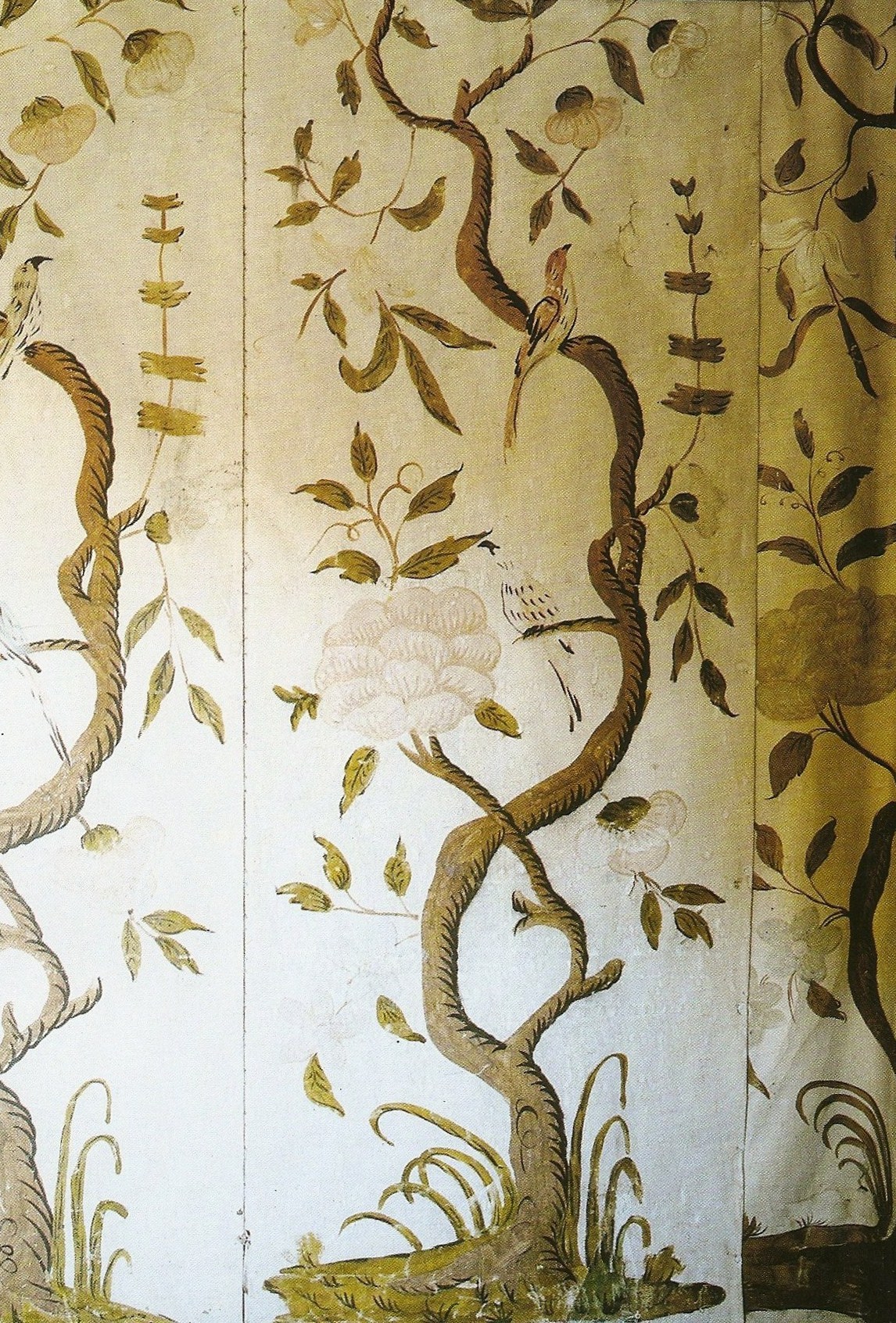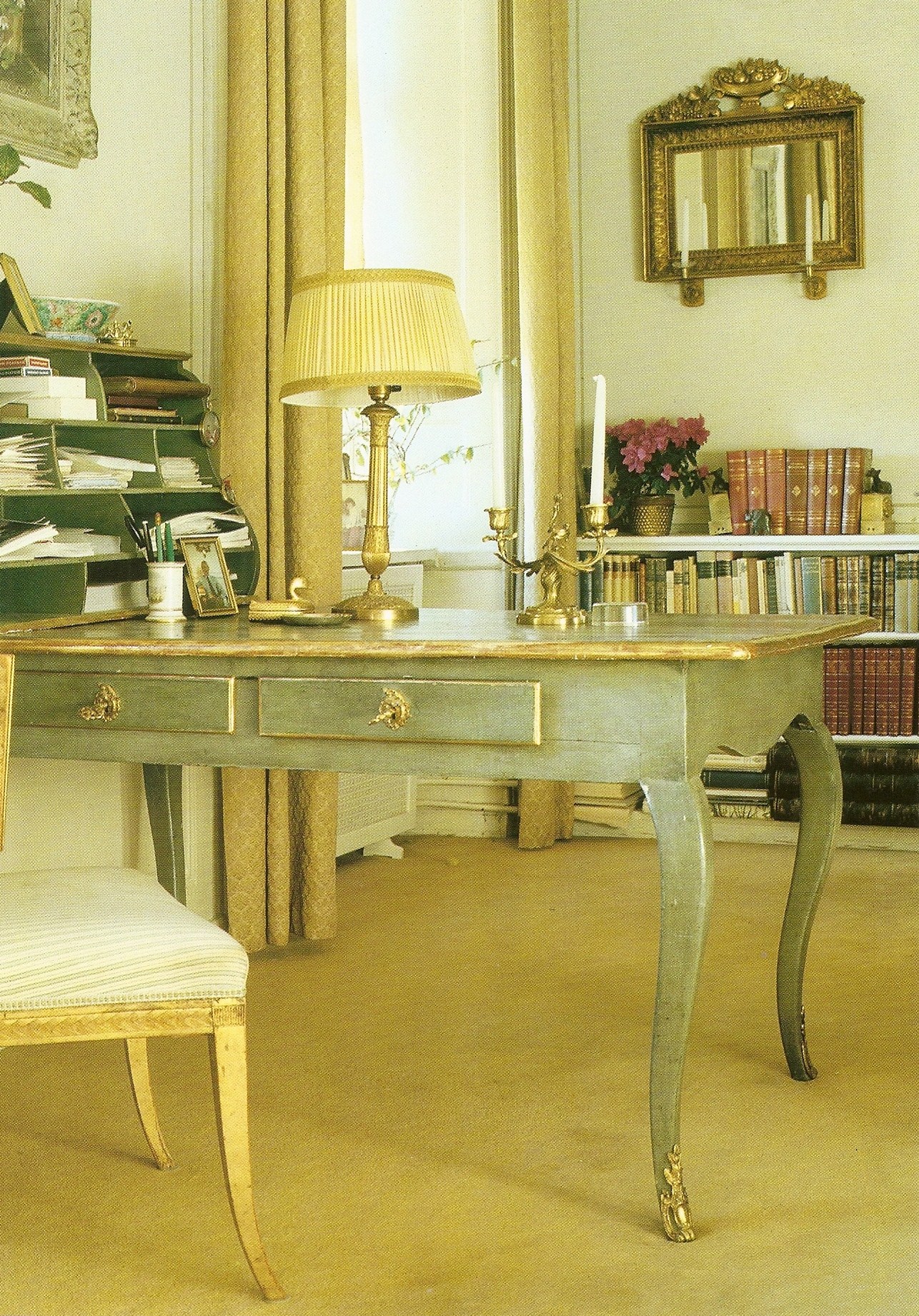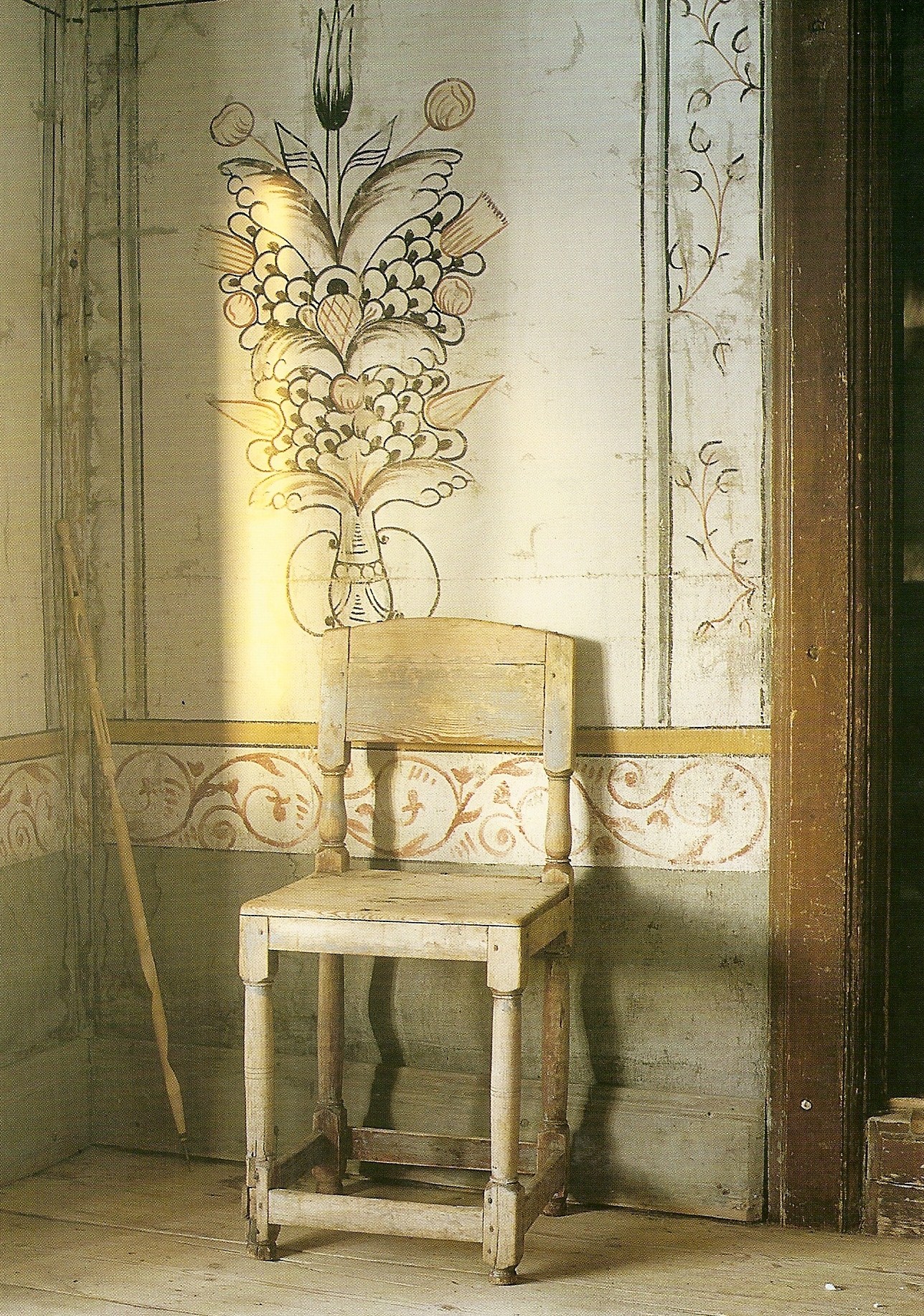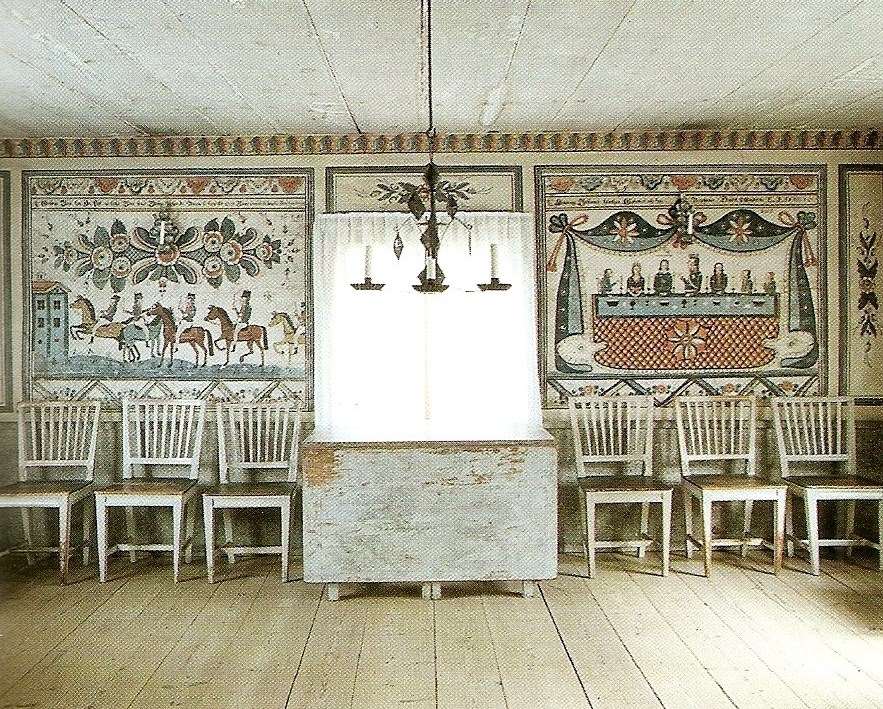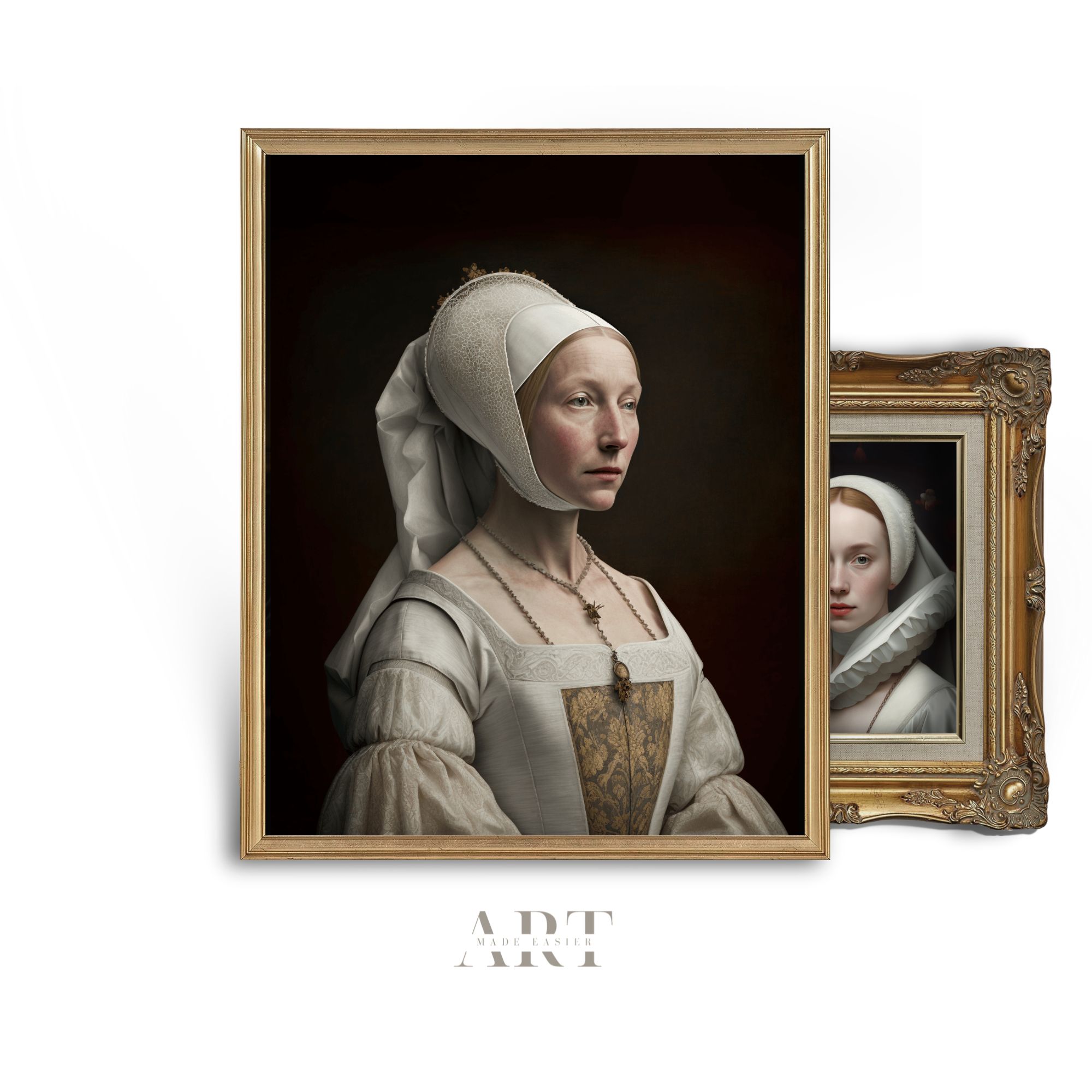The Best Swedish Decorating Books
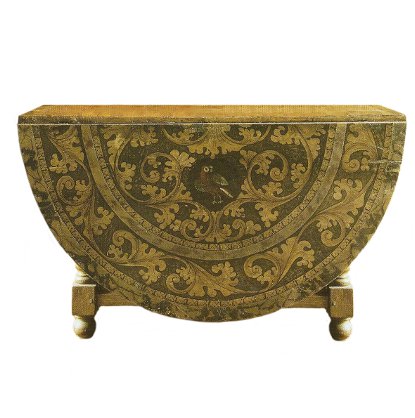 Book Review: Jocasta Innes Scandinavian Painted Furniture
Book Review: Jocasta Innes Scandinavian Painted Furniture
Jocasta Innes is the internationally renowned author of over sixty books on paint finishes, interior design and decorating. She is the founder of Paint Magic, which is a franchise chain of decorating shops which brought forth premier finishes such as color-washing and wood-washing. Paint Magic by Jocasta Innes is still is one of the best paint technique books I own to date. Scandinavian Painted Furniture by Innes guides a reader through the background of Swedish painting. Swedish painting has never caught more attention than in the last several years as people are still loving the lighter colored furniture, but want furniture more sophisticated than Shabby Chic. Innes guides us through 5 countries which make up the Nordic Federation (Norway, Finland, Sweden,Denmark and Iceland) and have defined the classic Scandinavian Design through the 18th century.
Timber was widely available in the Nordic region which made it accessible to create new furniture, and common enough to transform with paint. Classical Greeks painted marble, the Medieval English painted stone, and the Swedes were blessed with wood which they painted. These few countries in the Nordic region left us a heritage of beautiful designs known world wide.
What makes pre-twentieth century scandianavian furniture so appealing is the detailed paint finishes that have lasted through generations. Scandinavian furniture painting added color and provided much needed light into dark homes. Swedes found themselves depressed by the notoriously long northern winters where daylight would last an hour or two. Many homes were dark through the long winters, and without electricity, candles provided the majority of the light. Homes remained so dark that extra measures over time such as paint used on furniture and on the walls was almost a necessity to bring in any extra available light.
Painted pieces were not limited to just free standing furniture, but also included cupboards, built in shelving, dressers and lets not forget the walls. Painting furniture provided an appeal and allowed for variation than just wood furniture that decorated the home. They also believed that layers of paint would deter beetles, as well as guarded against dirt, grime and wear and tear. Old Scandinavian paint formulas contain vitriol and lime which did deter insect parasites which did eat tunnels through furniture, which overtime just fell apart.
There are two different styles of Antique Scandinavian Painted Furniture that developed in the Nordic countries. One style was a rural peasant type of decoration that flourished within the middle class, and another style referred to as “gentlemanly” which was often found in the higher class grand homes.
Scandinavian / Swedish Peasent Furniture:
Rural country peasant furniture is often referred to as folk furniture which is often distinguished by strong colors and a wealth of decoration. Peasant art and painting was not notable for its originality or self expression. Each distinct area would have specific colors much like national sports teams. For example the NFL is made up of 30 teams started out of the major cities of the United States. The Seattle Sea-hawks wouldn’t wear the Washington Redskins uniforms, much like the Scandinavian regions wouldn’t paint anything but their own distinct motifs which were passed down through generations. Painters were content to work within an inherited regional collection of motifs and colors. Much of this resulted just from the inspiration in their local areas. They didn’t have the internet to compare different styles, but they did from time to time discover new techniques and embellishments which they would just adjust some changes on their basic themes. A regional style or a typical color scheme once laid down, was then faithfully copied in its essentials by the succeeding generations of painters and craftsman. Today, as they sift through different Swedish furniture which a name is accredited, is often individual artists which had an acknowledgement of local reputation.
Scandinavian / Swedish Gentlemanly Furniture:
The other renowned definitive painted furniture most people are acquainted with is referred to as “gentlemanly” furniture, thus making the distinction between the peasant farms and gentleman estates. This furniture was made for upper class grand homes, and castles than the wooden villas and urban middle class homes.
This type of Scandinavian furniture is all together different in its use of paint, color, shape and function. These classes of people were well educated and travelled and were familiar with areas of high influence such as Paris, London, Berlin and St Petersburg. The styles of Baroque, Rococo and Neoclassicism were then repeated in their Scandinavian homes with the aesthetic remaining the same, but the overall design distinctly Scandinavian.
By the 18thcentury, soft colors became quite popular. Putty, straw yellow, blue and green were finished with layers of glazes and combined with gold leaf. Upper class furniture had a restrained sense of color, typically simple with limited decoration. The overall finish was sophisticated, formal and elegant, than fussy brightly painted country styles. Furniture was often made of softwood, and its shape, style and function imitated foreign models from other countries.
Scandinavian / Swedish Country Provincial Furniture:
As high society moved on to country estates, so did the furniture. Some of the most appealing Scandinavianfurniture comes from this style, as it is known as “provincial”, with local touches. Jocasta Innes’s step to step painting guides are some of the best painting books on the market. Scandinavian Painted Furniture details over 20 projects typical to Swedish painting and decoration.
Save
Quiet luxury inspired by 18th-century Sweden
Light - Patina - Heritage

Restoration Tools
- Matte Topcoat
- Pro Grade Brush Set
- Finishing Sealer In Matte
- Bronze Spray For Hardware
- Sticks To Everything Primer
- Dead Flat Varnish
- Stick To Everything - Matte Primer
- Transparent Aged Glaze
- Sticks To Everything Brown Primer
- Prima Transfers
- Dyke Brown Glaze
- Escutcheons
- Medallion Silicone Mold
- French Key Molds
- Portico Scroll
- Rusty Paint Finishes
Recent Posts
- 200 Swedish Antiques A Person Can Look For
- Rococo In The Nordic Countries
- For The Love Of Collecting Antiques – A Swedish Interior
- Gustavian Furniture – How to get the look – Ulla Kloster
- 3 Swedish Must Haves – Decorating A Home Around Swedish Antiques
- The Beautiful Wall Paintings Of von Echstedtska gården In Sweden
- 400 Professional Designers Picked Green As The New Color To Watch
- 5 Scandinavian Interior Design Tricks – Megan Slack
- 30 Gray Toned Paint Colors For Swedish Styled Interiors – Behr
- DIY Upper Kitchen Cabinets – Lindsay – White Buffalo Styling
- Bringing The Garden In For The Winter
- The Home Office – Why Not Make Yours Unique ?
- The Light And Airy Furniture Of Sweden
- Slipcovers Have Always Been Popular Through Time – Swedish Decorating
- The Couple Behind D. Larsson Interior and Antikhandel – Swedish Antiques
- 6 Colors You’ll Find In Every Scandinavian Home – Laura Barry
- 5 Decorating Mistakes Not To Make – By Gabrielle Savoie
- Designer Marshall Watson’s Scandinavian Newport Beach Home
- Designer Marshall Watson’s Scandinavian Summer House
- Swedish Inspired Kids Bedrooms
- 5 Kitchen Design Lessons You Can Learn from Scandinavian Interiors
- Jenny’s DIY Wide-Plank Plywood Flooring Studio Renovation
- Decor Mistakes All 20-Somethings Make
- Can I Stain Over Paint To Produce A Patina?
- Q&A With Swedish Designers Edie Van Breems and Rhonda Eleish
- How To Avoid Yellowed White Painted Furniture With General Finishes Products
- Colleen Martin, Founder of Swede Collection Tells Us Her Journey Of How She Began Reproducing Gustavian Furniture
- Expect To See More Warm Grays, Blues And Creams In Gustavian Decorating
- 8 Brands Of Gold Spray Paint Were Compared To Find The Best Color
- Essential Characteristics Of 18th Century Swedish Interiors
- Gustavian Style By Kristie Barnett
- 7 Places To Find Swedish Design For Toddlers
- Study Shows The Gustavian Period Has Defined All Tastes Through Time In Sweden
- Mix Old and New Like the Scandinavians Do- Chloe Taylor
- Swedish Furniture Design – What Makes The 1800’s So Obsessive
- 5 Pieces Of Wise Decorating Advice From Tricia Foley
- Impressive History Of Fine Swedish Table Linen
- Linen Has An Incredible History- Find Out Why……
- Life In 17th Century Norway & Sweden
- How To Select The Right Linen For Your Children’s Bedroom- Kids Room Decor Ideas
- Nordic Style Kids Bedroom Decor Ideas
- Decorator Tricia Foley’s Signature White Interiors
- 10 Tips From Interior Designer Furlow Gatewood
- Living In Norway- Norwegian Life In The 18th & 19th Centuries By Elisabeth Holte
- Investing In Mora Clocks – Expert Advice From Jo From Swedish Interior Design
- International Interior Decorating Magazines Worth Buying
- Swedish Council Of America Articles
- 5 Homes Decorated Around The Nordic Style
- Swedish Reproduction Furniture At Solgarden
- Behind The Rundale Palace in Latvia
- Nordic Style Historical Interior Decorating Books – Living Museums in Scandinavia
- Decorating Around Red- Historical Interior Design Ideas
- Florence De Dampierre Comments On Nordic Furniture In Sweden And Denmark
- 12 Designers Pick Their Favorite Paint Colors – House Beautiful
- 7 Of The Most Famous Swedish Furniture Designers And Decorators
- New Research Suggests Swedish Furniture In The 1700’s May Have Had Strong Colors
- Swedish Tripod Tilt-Top Candle Stand Tables
- Decorators Who Have Embraced The Nordic Style – 30+ Pictures
- A Look Behind Skogaholm Manor -18th century Swedish Decorating
- Decorating With Swedish Country Antiques- Darlene Peterson Buchanan
- 12 Interior Designers Pick Their Favorite Swedish Paint Colors
- 50+ Decorating Books Worth Looking At
- Swedish Decorating Inspirations In Yellow, Ivory And Beige- 50+ Pictures
- Decorating Around The Color Green – Swedish Style
- A Dallas, Texas Home Decorated Around The Swedish Style
- 3 Houses Decorated Around The Rustic Swedish Style
- Reproduction Distressed Furniture And Home Decor From Bliss Studio
- Buy The Swedish Style For Less
- 3 Swedish Style Homes Featured In Magazines
- Swedish Antiques From Debenham Antiques
- The History Behind Jean Bernadotte Otherwise Known As Karl Johan
- 5 Faux Wall Painting Techniques That Are Easier Than You Think
- Swedish Kids Rooms: 6 Ideas To Get The Look
- 5+ Nordic Homes Decorated Around White
- 10 Of The Best Tours In Sweden
- 3 Rustic Scandinavian Country Homes – Borrow Ideas From Norway and Denmark
- Spring Summer Checks and Florals For The Swedish Home
- 70 Swedish Furniture Pieces That Sell For Less- Swedish Decorating On A Budget
- Decorating With Blue: Swedish Style Decorating Ideas
- An Interview With Daniel Larsson- The Go-To Guy For Swedish Antiques
- 7 Scandinavian Country Decorating Books
- 75 Swedish Nordic Pinterest Pages! Oh Yes…More Eye Candy!
- 69 Inspiring Pictures Of Nordic Country Style Decorating
- 20 Scandinavian Gift Ideas
- 5 Ways To Add Life Into Worn-Out Furniture
- Mora Clocks: Investing In Swedish Heritage
- How To Decorate With Botanicals
- Buying Property In Sweden
- Get The Swedish Look By Installing Tongue And Groove Paneling
- The Lavish Interior Of The Swedish Häringe Castle
- The Swedish Wreta Gestgifveri Inn
- Paint It White He Says…. Washington Interior Designer Darryl Carter – Swedish Decorating
- 5 Pro Painting Tips For Black Furniture
- The Swedish Artist Carl Larsson
- A Guesthouse Decorated in The Swedish Style
- Swedish Furniture From Bukowski Market
- 216 Selections From Wallpaper Direct – Swedish Decorating
- A Look Behind The National Museum of Stockholm
- Antique Swedish Dealer Jane Moore’s Home Veranda Magazine
- A Swedish Collected Home In Upstate New York – Swedish Gustavian Decorating
- $100+ Solid Braided Rugs
- 60 Scandinavian Country Folk Art Books On Amazon
- 50 Examples Of Swedish Folk Country Interiors
- Designers Pick Their Favorite Gray Paints
- HOW TO: Paint Gustavian Finishes
- “Söderbo” A Home Untouched Since 1920
- Designer Martha Angus Loves Gustavian Style
- Les Indiennes Fabrics
- Decorating Secrets- 60 Quotes From The Best Experts In Design
- Swedish Kakelugn Stoves
- Helen Olsen’s Rungstedlund Home Revealed In Gods & Gardar Magazine
- The 1700 Collection Swedish Furniture
- Swedish Plaster Medallions
- The History Behind Empire Furniture From The Karl Johan Period -Liza Laserow
- Swedish Styled Wallpaper
- Nordic Style Drapery And Window Coverings
- The Gentle Palette of Swedish Antiques-Corey Amaro
- Custom Reproduction Swedish Furniture From Garbo Interiors
- 30 Spectacular Picks From Frantz Hemeleers Antiques
- Go Bold With Red- Part 1 Grand Sophisticated Interiors
- Go Bold With Red- Nordic Country Interiors
- The Baroque Style Of Switzerland
- Daniel Romualdez’s Swedish Montauk Home
- The Shocking History Behind “Emerald Green” Paint
- Stylish Looks For Slip-covering Your Furniture
- The Best 5 Websites For Purchasing Antique Hardware
- Fired Earth’s Anniversary Paint Collection
- Swedish Furniture Auctions -Uppsala Auktionskammare
- Louis Masreliez- The Designer Behind Gustav III’s Pavilion At Haga Park
- A Nordic Design Staple- The Swedish Kakelugn Tile Stove
- Swedish Antique Mirrors
- How To Decorate A Child’s Room In The Swedish Style
- Ruby Beets Swedish Rustic Home
- The Country Side Of Sweden- An All White Based Home
- Akerö in Södermanland, Sweden
- Krusenberg Herrgård: An 18th Century Swedish Luxury Hotel
- Wood Plank Flooring, A Swedish Design Must Have – Part 1
- Vinyl Plank Flooring, A Swedish Design Must Have – Part 2
- Laminate Wood Flooring, A Swedish Design Must Have – Part 3
- Plywood Plank Flooring, A Swedish Design Must Have – Part 4
- Painted Wood Flooring, A Swedish Design Must Have – Part 5
- The Romantic Baroque Style: Part 1- Stromholm
- The Romantic Baroque Style: Part 2 King Gustav Vasa
- The Romantic Baroque Style: Part 3 Skokloster & Steninge Palace
- The Romantic Baroque Style: Part 4 – A Collectors Home
- The Romantic Baroque Style: Part 5 Add Color
- Sweden’s Empire Decorated Rosersberg Palace
- The Most Beautiful Rococo Library In The World:The Anna Amalia Library
- 4 Resources For Swedish Decorating
- How Important Are Accent Pieces In A Swedish Home?
